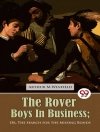D. H. Lawrence’s ‘Sons and Lovers’ is a seminal work that explores the complexities of familial relationships, particularly the intricate bond between mothers and sons. Set in the mining community of early 20th-century England, the novel employs a rich, impressionistic style that captures the raw emotional landscapes of its characters. Lawrence delves deeply into themes of love, class struggle, and the impact of industrialization, often weaving in psychological insights that reflect the influence of both Freudian and Nietzschean thought prevalent at the time. The narrative is interspersed with vivid descriptions and lyrical prose, making it not just a story of individual crises but also a commentary on societal transformations. D. H. Lawrence, a key figure in the modernist literary movement, was profoundly shaped by his own tumultuous upbringing in a working-class family. His personal experiences with love, betrayal, and the search for identity inform his character development and thematic exploration in ‘Sons and Lovers.’ Lawrence’s fascination with the dynamics of human relationships arises from his profound sense of alienation in a rapidly changing world, giving readers insight into the struggles of his characters, which parallel his own life. This timeless novel is highly recommended for readers seeking to understand the complexities of human emotion and familial bonds. Lawrence’s exploration of the interplay between love and obligation resonates on multiple levels, inviting readers to reflect on their own relationships. ‘Sons and Lovers’ offers an enduring examination of the modern psyche, making it an essential read for anyone interested in understanding the intersections of love, class, and individuality.
Mengenai Pengarang
David Herbert Lawrence (1885-1930), commonly known as D. H. Lawrence, was an influential English writer of the 20th century whose prolific and diverse output included novels, short stories, poems, plays, essays, travel books, paintings, translations, and literary criticism. Lawrence’s oeuvre is remarkable for its exploration of the complexities of human psychology, its vivid depiction of the natural world, and its forthright representation of sexuality, which often led to controversies and censorship battles. Born in the small mining town of Eastwood, Nottinghamshire, Lawrence drew upon his working-class upbringing to craft novels with a deep empathy for the working man’s plight and an intricate dissection of class dynamics. His novel ‘Sons and Lovers’ (1913), a semi-autobiographical work, is widely considered a masterpiece of English literature and a seminal exploration of familial and Oedipal tensions. The novel delves deeply into the relationships between a young man, his emotionally overbearing mother, and his romantic interests, and is emblematic of Lawrence’s intense psychological and emotional character studies. Other significant works by Lawrence include ‘The Rainbow’ (1915), ‘Women in Love’ (1920), and ‘Lady Chatterley’s Lover’ (1928), all of which cement his reputation as a literary innovator unafraid to challenge the moral sensibilities of his time. Despite the controversies that some of his works provoked, D. H. Lawrence is esteemed both for his profound contribution to English literature and for his incisive social commentary, making him a central figure in the modernist literary movement.












